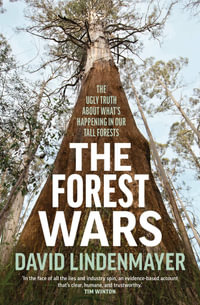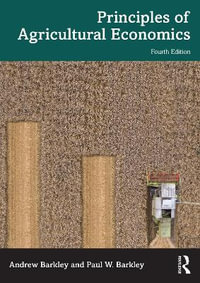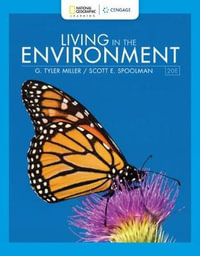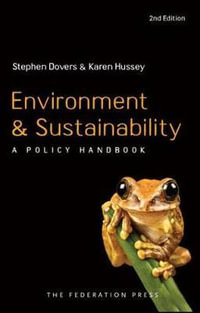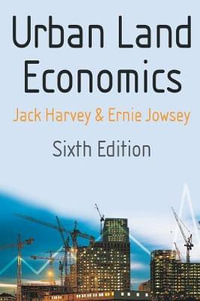I Background.- 1. Introduction.- 1.1 Background.- 1.2 Objectives.- 1.3 Working Program.- 1.4 Contents of the Book.- References.- 2. Ecosystem Variability and Gradients. Examples from the Baltic Sea as a Background for Hazard Assessment.- 2.1 Introduction.- 2.2 The Baltic Sea - a Sea of Gradients.- 2.2.1 Background.- 2.2.2 Physical and Chemical Gradients.- 2.2.3 Biological Gradients.- 2.2.4 Forces Counteracting the General Patterns of Gradients.- 2.2.4.1 Seasonal Variations.- 2.2.4.2 Water Exchange and Circulation.- 2.2.4.3 Migrations.- 2.3 Acute, Chronic and Intermittent Exposure.- 2.4 Test Organisms and Test Strategies.- 2.5 Extrapolations.- 2.6 Field Validation.- 2.6.1 General Considerations.- 2.6.2 Eco-epidemiology.- 2.6.3 Behavioral Aspects of Field Validation.- 2.6.4 Recovery Studies as a Tool in Field Validation.- 2.7 Environmental Gradients, Toxic Chemicals and Stress.- References.- 3 The ESTHER Approach to Environmental Hazard Assessment of Chemicals.- 3.1 Testing and Hazard Assessment: One Phase in the Decision Making on Chemicals.- 3.2 Initial Hazard Assessment of Chemicals - the ESTHER Manual.- 3.2.1 Background.- 3.2.2 Design of the ESTHER Manual for Initial Hazard Assessment of Chemicals.- 3.3 Defining Targets of Exposure.- 3.3.1 General Aspects.- 3.3.2 Rationale for Selecting Targets of Exposure.- 3.3.3 Possible Methodologies to Define Targets of Exposure.- 3.4 Objectives of an Advanced Hazard Assessment.- 3.5 Major Differences Between Initial and Advanced Hazard Assessment.- 3.6 "The ESTHER Approach".- References.- II Special Topics.- 4 Factors Determining the Fate of Organic Chemicals in the Environment: the Role of Bacterial Transformations and Binding to Sediments.- 4.1 Introduction.- 4.2 Experimental Procedures.- 4.2.1 Chemical Considerations.- 4.2.1.1 Quantification and Identification of Substrates and Metabolites.- 4.2.1.2 Binding of Substrates and Metabolites: Extraction Procedures.- 4.2.2 Microbiological Considerations.- 4.2.2.1 General Aspects.- 4.2.2.2 Experimental Aspects.- 4.3 Aerobic Reactions.- 4.3.1 Significant Areas.- 4.3.1.1 The Effect of Co-substrates: Concurrent Metabolism.- 4.3.1.2 The Effect of Substrate Concentration and Cell Density.- 4.3.1.3 Rates of Transformation.- 4.3.2 Problem Areas and Unresolved Issues.- 4.3.2.1 The Problem of Translating Laboratory Data to Field Situations.- 4.3.2.2 Aspects of Metabolism and Regulation.- 4.4 Anaerobic Reactions.- 4.4.1 Significant Areas.- 4.4.1.1 Metabolic Reactions.- 4.4.1.2 The Role and Significance of Syntrophy.- 4.4.2 Problem Areas and Unresolved Issues.- 4.4.2.1 The Stability of Consortia and Their Metabolic Dependence.- 4.4.2.2 The "Natural" Substrates for Growth.- 4.5 The Role of Sediments in Determining Environmental Fate.- 4.5.1 Background.- 4.5.2 Sorption and Binding: the Degree of Reversibility.- 4.5.3 Some Important Unresolved Issues.- 4.6 A Personal Summing-up.- References.- 5 Bioavailability and Uptake of Xenobiotics in Fish.- 5.1 Introduction.- 5.2 Background.- 5.3 Physiological Factors Affecting the Uptake Rate.- 5.4 Pow Value Versus Rate of Uptake.- 5.5 Importance of pH.- 5.6 General Discussion and Conclusions.- References.- 6 Bioaccumulation and Biomagnification of Hydrophobic Persistent Compounds as Exemplified by Hexachlorobenzene.- 6.1 Uptake and Elimination Via the Water.- 6.2 Abiotic Environmental Factors Affecting Bioavailability.- 6.3 Uptake and Passive Elimination Via the Food.- 6.4 Active Excretion.- 6.5 Net Bioaccumulation and the Occurrence of Biomagnification.- 6.6 Conclusions.- References.- 7. Fish Bile Analysis for Monitoring of Low Concentrations of Polar Xenobiotics in Water.- 7.1 Introduction.- 7.2 Design of the Study.- 7.3 Chemical Synthesis and Analysis.- 7.3.1 Isotope-labeled 4,5,6-Trichloroguaiacol.- 7.3.2 Chemical Analysis by Radiometric Techniques.- 7.3.2.1 Content of 4,5,6-TCG in Water.- 7.3.2.2 Content of Metabolites in Bile.- 7.4 Factors Affecting Regulation of Foreign Compounds in FishBile.- 7.4.1 Biotransformation.- 7.4.1.1 In Vitro and in Vivo Metabolism of 4,5,6-TCG.- 7.4.1.2 Enzyme Induction and Seasonal Variations.- 7.4.2 Fish Species.- 7.4.3 Fish Size.- 7.4.4 Nutrition.- 7.5 Exposure of Fish to 4,5,6-TCG.- 7.5.1 Short-term Exposure.- 7.5.2 Long-term Exposure.- 7.6 Field Application.- 7.7 Conclusions.- References.- 8 Ecological Concepts Important for the Interpretation of Effects of Chemicals on Aquatic Systems.- 8.1 Introduction.- 8.2 Assessment of Toxic Effects at the Population Level.- 8.2.1 Mortality Distribution in Aquatic Populations.- 8.2.2 Compensatory Mortality in the Interpretation of Effects.- 8.2.3 The Survivor Effect at the Population Level.- 8.3 Assessment of Toxic Effects at the Community Level.- 8.3.1 Community Analysis.- 8.3.2 The Guild: A Community Tool for Complex Ecological Interactions.- 8.3.3 The Specialist-Generalist Concept Applied to Hazard Assessment.- 8.3.4 Role of Keystone Species in Effect Assessment.- 8.3.5 The Survivor Effect at the Community Level.- 8.4 Assessment of Effects at the Ecosystem Level.- 8.4.1 Stress and Ecosystems.- 8.4.2 Cumulative Environmental Effects.- 8.5 Decision Rules for Interpreting the Effects of Chemicals.- References.- 9 Selected Assays for Health Status in Natural Fish Populations.- 9.1 Concepts in Health Monitoring.- 9.1.1 Effects Expressed at Different Biological Levels.- 9.1.2 Criteria for Health Assays in Fish.- 9.2 Development of Health Assays.- 9.2.1 Level of Organization.- 9.2.2 Physiological Methods in Fish Health Assessment.- 9.2.3 Laboratory Studies.- 9.2.4 Use of Physiological Methods in Field Studies.- 9.3 Assays for Health Status in Natural Fish Populations.- 9.3.1 ?-Aminolevulinic Acid Dehydratase.- 9.3.2 Mixed Function Oxidase.- 9.3.3 Metallothionein.- 9.3.4 Smoltification in Salmonids.- 9.4 Future Development: Remarks and Recommendations.- References.- 10 Community Testing, Microcosm and Mesocosm Experiments: Ecotoxicological Tools with High Ecological Realism.- 10.1 Introduction.- 10.2 Strategies Used in Designing Multi-species Test Systems.- 10.3 Shortcomings of Some Early Model Ecosystem Designs.- 10.4 Community Testing with Natural Associations of Periphyton and Phytoplankton.- 10.4.1 Introduction.- 10.4.2 Rationale.- 10.4.3 Design and Procedures.- 10.4.4 Advantages and Disadvantages.- 10.4.5 Validation.- 10.4.6 Applications.- 10.5 Pollution-Induced Community Tolerance (PICT).- 10.5.1 Rationale.- 10.5.2 Evidence.- 10.5.3 Applications.- 10.6 Enclosure of Marine Profundal-zone Benthic Communities.- 10.6.1 System to be Studied.- 10.6.2 Trophic Structure and Feeding Strategies.- 10.6.3 Rationale of Microcosm Enclosures.- 10.6.4 Design and Procedures.- 10.6.5 Similarity with Mother System.- 10.6.6 Applications.- 10.7 Land-based, Marine Littoral-zone Enclosures.- 10.7.1 Problem of Setting up Land-based Aquatic Mesocosms.- 10.7.2 Rationale.- 10.7.3 Design and Procedures.- 10.7.4 Stability, Reproducibility and Similarity with Mother System.- 10.7.5 Application and Field Validation.- 10.8 Limnic in Situ Enclosures - Limnocorrals.- 10.8.1 Rationale.- 10.8.2 Choice of Mother System and Design of Limnocorrals.- 10.8.3 Similarity with Mother System.- 10.8.4 Advantages and Disadvantages of the Limnocorral Approach.- 10.9 Discussion and Conclusions.- References.- III Case Studies.- 11 Advanced Hazard Assessment of Arsenic in the Swedish Environment.- 11.1 Inorganic Arsenic Compounds.- 11.1.1 Physical and Chemical Properties.- 11.1.2 Industrial Production.- 11.1.3 Uses of Arsenic Compounds.- 11.2 Organic Arsenic Compounds.- 11.2.1 Physical and Chemical Properties.- 11.2.2 Man-made Organic Arsenic Compounds.- 11.2.3 Uses and Quantities.- 11.2.4 Naturally Occurring Organic Arsenic Compounds.- 11.3 Recommended Analytical Procedures.- 11.3.1 Sampling and Sample Treatment.- 11.3.1.1 Natural Waters.- 11.3.1.2 Sediments.- 11.3.1.3 Biological Materials.- 11.3.2 Analytical Methods for Environmentally Relevant Arsenic Compounds.- 11.3.2.1 Background.- 11.3.2.2 Total Arsenic.- 11.3.2.3 Speciation of Inorganic Arsenic.- 11.3.2.4 Separation of Inorganic and Organic Arsenic in Aquatic Organisms and Sediment.- 11.3.2.5 Organic Arsenic Compounds.- 11.3.3 Possible Errors and Difficulties.- 11.3.3.1 Storage of Samples.- 11.3.3.2 Extraction.- 11.3.3.3 Hydride Generation Methods.- 11.3.3.4 Column Separation Methods.- 11.4 Natural Occurrence of Arsenic.- 11.4.1 Rocks, Soils and Sediments.- 11.4.2 Air.- 11.4.3 Water.- 11.4.3.1 Natural Sources.- 11.4.3.2 Arsenic Levels in Groundwater.- 11.4.3.3 Arsenic Levels in Precipitation.- 11.4.3.4 Arsenic Levels in Surface Freshwater.- 11.4.3.5 Arsenic Levels in Marine Water.- 11.4.4 Biota.- 11.5 Anthropogenic Sources and Discharges of Arsenic.- 11.5.1 Global Situation.- 11.5.2 Situation in Sweden.- 11.5.2.1 Discharges from Industrial Activities.- 11.5.2.2 Releases from the Use of Arsenic Compounds as Pesticides.- 11.5.2.3 Releases from Waste Dumps and Deposits.- 11.6 Levels of Exposure of Arsenic in Swedish Contaminated Systems.- 11.6.1 Freshwater.- 11.6.2 Brackish Water.- 11.7 Physical and Chemical Factors Regulating Arsenic Exposure.- 11.7.1 General Influence of Water Quality.- 11.7.2 Oxidation - Reduction.- 11.7.3 Adsorption and Precipitation.- 11.8 Biological Factors Regulating Arsenic Exposure.- 11.8.1 Biotransformation by Microorganisms.- 11.8.1.1 Bacteria, Molds and Fungi.- 11.8.1.2 Algae.- 11.8.2 Uptake and Bioconcentration in Algae and Invertebrates.- 11.8.2.1 Background.- 11.8.2.2 Distribution and Bioaccumulation in a Marine Littoral Model Ecosystem.- 11.8.2.3 Distribution and Bioaccumulation in a Marine Profundal Soft-bottom System.- 11.8.3 Summary of the Metabolic Cycle of Arsenic in Aquatic Ecosystems.- 11.9 Effects Studied with Microalgal Populations and Communities.- 11.9.1 Microalgal Populations.- 11.9.2 Microalgal Communities.- 11.9.2.1 Short-term Effects on Periphyton Photosynthesis.- 11.9.2.2 Long-term Effects on Periphyton Biomass and Species Composition in Marine Microcosms.- 11.9.2.3 Sensitivity of Photosynthesis in Periphyton at Elevated Nutrient Levels.- 11.9.2.4 Short-term Effects of Various Arsenicals on Periphyton and Phytoplankton in Different Environments.- 11.9.2.5 Pollution-Induced Community Tolerance (PICT).- 11.9.3 Conclusions from Microalgal Test Systems.- 11.10 Effects Studied with Marine, Profundal-zone, Benthic Microcosms.- 11.11 Effects on a Marine Littoral Ecosystem - Studied with Land-based Mesocosms.- 11.11.1 Background.- 11.11.2 Effects of Arsenic on the Algal Components.- 11.11.2.1 Primary Effect on Fucus vesiculosus.- 11.11.2.2 Effect on Phosphate Uptake.- 11.11.2.3 The Effect of the Disappearance of Fucus on Other Algae.- 11.11.3 Effects on the Animal Components.- 11.11.3.1 Methods.- 11.11.3.2 Effects on Macroinvertebrates.- 11.11.3.3 Effects on Fish.- 11.11.4 Conclusions.- 11.12 Hazard Assessment of Arsenic in Aquatic Ecosystems.- 11.12.1 General Aspects.- 11.12.2 Occurrence.- 11.12.3 Routes.- 11.12.4 Mode of Action.- 11.12.5 Ecotoxicity.- 11.12.6 Evaluation.- References.- 12 Advanced Hazard Assessment of 4,5,6-Trichloroguaiacol in the Swedish Environment.- 12.1 Origin and Properties of Chloroguaiacols and Chlorocatechols.- 12.2 Sources and Discharges of 4,5,6-Trichloroguaiacol and 3,4,5-Trichlorocatechol.- 12.2.1 Quantities Formed in Various Bleaching Processes.- 12.2.2 Discharges of 4,5,6-TCG and 3,4,5-TCC.- 12.3 Biotransformation and General Turnover in the Environment.- 12.3.1 Introduction.- 12.3.2 Microbial Reactions in the Aquatic Phase.- 12.3.3 Occurrence of Chloroguaiacols and Chloroveratroles in Biota.- 12.3.4 Binding to, and Reactions in the Sediment Phase.- 12.3.5 The Role and Significance of Environmental Factors.- 12.4 Procedures for Synthesis of Test Compounds.- 12.4.1 Introduction.- 12.4.2 Synthesis of Unlabeled Chloroguaiacols and Their Metabolites.- 12.4.2.1 Synthesis of 4,5,6-Trichloroguaiacol.- 12.4.2.2 Synthesis of 3,4,5-Trichlorocatechol.- 12.4.2.3 Synthesis of 3,4,5-Trichloroveratrole.- 12.4.3 Comments on Synthetic Procedures for Unlabeled Compounds.- 12.4.4 Synthesis of Labeled Chloroguaiacols and Chlorocatechols.- 12.5 Procedures for Sampling and Analysis.- 12.5.1 Sampling and Sample Treatment.- 12.5.2 Extraction and Analysis of 4,5,6-Trichloroguaiacol and Its Metabolites.- 12.5.2.1 Water.- 12.5.2.2 Extraction and Characterization of Sediment.- 12.5.2.3 Extraction of Algae.- 12.5.2.4 Extraction of Invertebrates and Fish.- 12.5.2.5 Pretreatment and Extraction of Fish Bile.- 12.5.2.6 Gas Chromatographic Analysis.- 12.5.3 Mass Spectrometric Identification.- 12.5.3.1 Introduction.- 12.5.3.2 Identification of Chloroguaiacols and Chlorocatechols.- 12.5.3.3 Identification of Chloroveratroles and l,2,3-Trichloro-4,5,6-trimethoxybenzene.- 12.6 Biological Factors Regulating Exposure.- 12.6.1 Biotransformation by Bacteria.- 12.6.1.1 Introduction.- 12.6.1.2 Rates of Aerobic O-methylation.- 12.6.1.3 Rates of Anaerobic Reactions.- 12.6.1.4 The Problem of Extrapolation to the Natural Environment.- 12.6.2 Bioavailability and Uptake Through Fish Gills.- 12.6.2.1 Rate of Uptake Measured in Perfused Gills.- 12.6.2.2 Uptake Measured in Vivo.- 12.6.3 Bioaccumulation and Biomagnification.- 12.6.3.1 Introduction.- 12.6.3.2 Accumulation in Algae.- 12.6.3.3 Accumulation in Invertebrates.- 12.6.3.4 Accumulation in Fish.- 12.6.3.5 Evidence for Biomagnification.- 12.7 Effects Studied at the Single-species Level.- 12.7.1 Some Background Data.- 12.7.2 Inhibition of Photosynthesis.- 12.7.3 Induction of Hepatic Enzymes in Fish.- 12.8 Effects Studied at the Community Level.- 12.8.1 Effects on Periphyton Communities in Brackish-water Littoral Mesocosms.- 12.8.2 Effects on Marine Periphyton Communities.- 12.9 Effects Studied at the Systemic Level.- 12.9.1 Brackish-water Littoral Ecosystem.- 12.9.2 Effects on the Algal Component.- 12.9.3 Effects on the Invertebrate Component.- 12.9.3.1 Fucus Habitat.- 12.9.3.2 Sediment Habitat.- 12.9.4 Effects on the Fish Component.- 12.9.5 Budget of 4,5,6-TCG with Metabolites and Long-term Effects.- 12.10 A Tentative Hazard Assessment of 4,5,6-Trichloroguaiacol.- References.- 13 A Tentative Hazard Assessment of Hexachlorobenzene in the Aquatic Environment.- 13.1 Physical and Chemical Properties.- 13.1.1 Physical Properties.- 13.1.2 Chemical Properties and Reactivity.- 13.1.3 Photochemical Reactivity.- 13.2 Sources and Uses.- 13.2.1 Synthesis.- 13.2.2 Use.- 13.2.3 Formation as a By-product in the Organicchemical Industry.- 13.2.4 Formation as a By-product in Other Industrial Processes.- 13.2.5 Formation in Combustion Processes.- 13.3 Recommended Analytical Procedures.- 13.3.1 Sampling and Sample Treatment.- 13.3.1.1 Tissue Samples.- 13.3.1.2 Sediment Samples.- 13.3.2 Analytical Methods for HCB in Environmental Samples.- 13.3.3 Possible Errors and Difficulties.- 13.4 Occurrence in the Environment - Levels of Exposure.- 13.4.1 Occurrence in Air.- 13.4.2 Content in Water and Sediment.- 13.4.3 Concentrations in Biota.- 13.4.3.1 Feral Fish.- 13.4.3.2 Regional Distribution - Content in Human Breast Milk.- 13.5 Biological Factors Regulating Exposure.- 13.5.1 Biochemical Degradation.- 13.5.2 Bioavailability - Permeation Through Biological Membranes.- 13.5.3 Uptake and Bioconcentration.- 13.5.4 Biotransformation in Higher Animals.- 13.5.5 Biotransformation in Lower Animals and in Plants.- 13.5.6 Mechanism of Biotransformation in the Rat.- 13.6 Effects Studied at the Individual or Population Level.- 13.7 Mechanisms Behind Observed Toxic Effects.- 13.8 Some Concluding Comments on the Environmental Hazard of HCB.- References.- IV Conclusions.- 14 Concluding Remarks.- References.- Appendix I.- Species and Genera Index.






